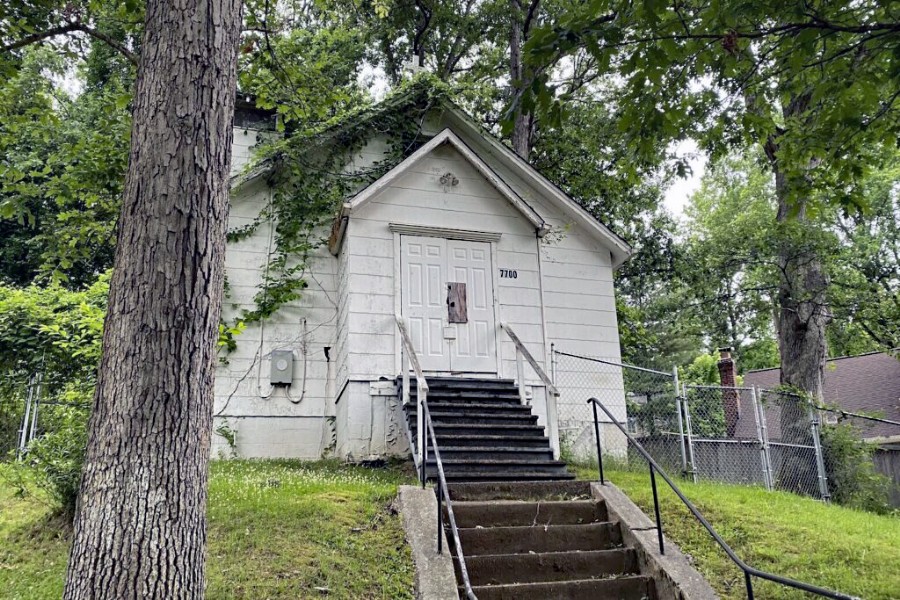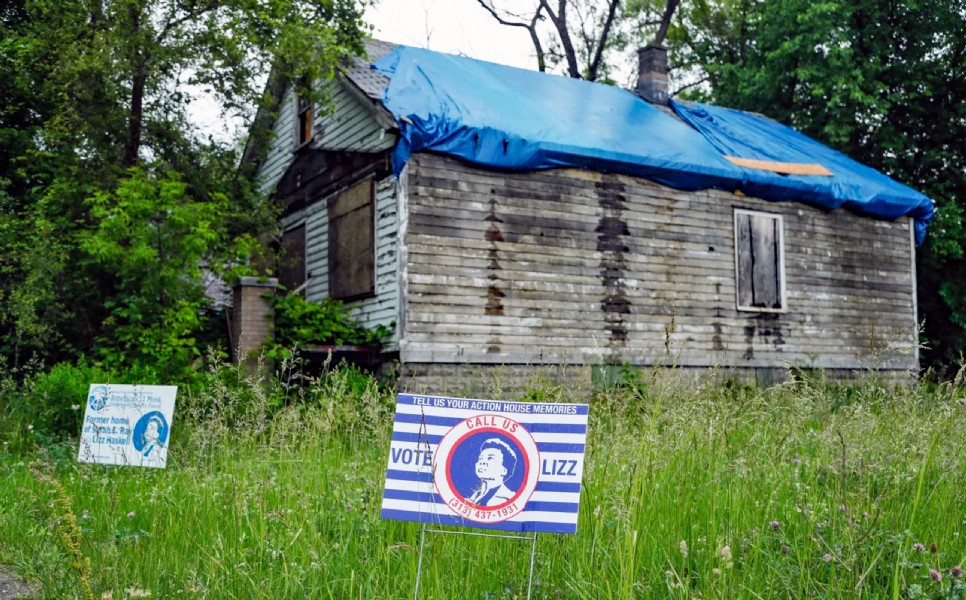Endangered African American Historic Sites
Olivewood Cemetery - Houston, Texas
Incorporated in 1875, Olivewood Cemetery in Houston, Texas, is one of the oldest-known platted African American cemeteries in Houston, with more than 4,000 burials on its 7.5-acre site. The final resting place of many notable figures in Houston's early African American community and of formerly enslaved Africans, this Texas Historic Cemetery and UNESCO Site of Memory for the Slave Route Project also illustrates unique African American burial practices developed in pre-Emancipation Black communities, including upright pipes as grave features, the use of ocean shells as grave ornaments, and upside-down or inverted text.
Over time, changing demographics and increased development led to the cemetery's decline and abandonment. Decades of neglect, vandalism, uncontrolled invasive vegetation, and the occasional use of the cemetery as an illegal dumping ground took their toll. But the most persistent threat is the impact of extreme weather events due to climate change. Historic gravesites are being damaged and even lost entirely due to extreme precipitation events that cause erosion as uncontrolled run-off and greater volumes of water move at higher speeds through the bayou adjacent to the cemetery.
The nonprofit Descendants of Olivewood, Inc. formed in 2003 to restore and maintain the cemetery and now has legal guardianship. With the support of an African American Cultural Heritage Action Fund grant in 2021, the organization has undertaken a comprehensive study to clarify the extent of the threat from flooding and erosion, and identify specific protection and mitigation measures, but advocates will need partnerships and funding in order to implement these plans.
Morningstar Tabernacle No. 88 Order of Moses Cemetery and Hall - John Cabin, Maryland
In 1880, the formerly enslaved couple Robert and Sarah Gibson bought property on what is now Seven Locks Road in Cabin John, Maryland. By 1895 nine other black families had joined them in buying land here. Together these families built a self-reliant settlement, called Gibson Grove, later just No. 10.
In 1882, the community organized the first black school in the district. In 1885, it established Morningstar Tabernacle No. 88 of the Order of Moses. This benevolent society helped members in times of need and in death. Its Moses Hall and Cemetery were adjacent to each other. By the 1880s the community was on the church circuit; in 1898 Sarah Gibson gave land to formally establish the Gibson Grove AME Zion Church. The school for the local black children never had a dedicated building; it was alternatively housed in the church and the Moses Hall lodge.
The Moses Hall foundation in Cabin John is the last known surviving remnant of an Order of Moses hall in Montgomery County.
Sarah E. Ray House - Detroit, Michigan
In 1945, over a decade before Rosa Parks famously defied Jim Crow segregation laws, another Black woman in Detroit, Michigan won an important case in the United States Supreme Court. Because of her race, Sarah Elizabeth Ray had been denied passage aboard the steamship SS Columbia on an excursion to Bob-Lo Island. According to the assistant general manager of the Bob-Lo Excursion Company, which operated the steamship, it had a policy of excluding "'Zoot-suiters,' the rowdyish, the rough, and the boisterous, and… colored."
Ray then went to the NAACP, where she filed a criminal complaint against the Bob-lo Company.
The local courts ruled in Ms. Ray's favor. The owners of the line appealed to the Michigan State Supreme Court, which subsequently also ruled in Ms. Ray's favor. The Bob-lo Company then appealed the case to the U.S. Supreme Court, asking the Court to hold the state's civil rights act unconstitutional because it infringed upon the power of Congress to regulate interstate and foreign commerce. In a historic ruling, The Court upheld the Michigan civil rights. Bob-Lo Excursion Co. v. People of the State of Michigan, 333 U.S. 28 affirmed the ruling of the lower courts, signaling the Supreme Court's willingness to protect the civil rights of Black Americans. This case would prove crucial in paving the way for Brown v. Board of Education.
This old school is currently in the process of renovation, and this project is overseen by Henry Mitchell. Mitchell wants to see this property brought back to life, and you can help donate or give him a call at 501-818-9126 to see how you can help!
But this sacred land is changing, its permanence imperiled by the unholy forces of climate change. By the end of this century, much of land so recently designated as the Harriet Tubman Underground Railroad National Historic Park and the area around it could be underwater, researchers say.



